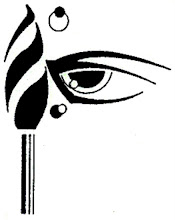Like a few other places, streets are a public stage where life unfolds. From town parades and trick-or-treating to markets and public gatherings, they celebrate and come together with our neighbors. They're where we bump into friends and one of the few places where we routinely encounter people different from ourselves. They're where people have gathered to protest injustice for centuries. That's why Project for Public Spaces has advocated that streets are more than just a means of mobility. Streets are critical public spaces that can enrich our communities' social, civic, and economic fabric.
Resources
1. PRINCIPLES
2. ACTIONS FOR INDIVIDUALS
3. ACTIONS FOR COMMUNITIES
4. ACTIONS FOR GOVERNMENT
5. A PLACE MAKER'S PRIMER ON ROAD DIETS
6. STREETS AS PLACES ACTION PACK
What are Streets as Places?
Donald Appleyard may have said it best: "Streets have been where children first learned about the world, where neighbors met, the social centers of towns and cities, the rallying points for revolts, the scenes of repression." Streets showcase the lives of our communities, and being exposed to the good and bad of the world on our roads can make us more compassionate, empathetic, and connected citizens.
Of course, an essential function of streets is facilitating travel from one place to another. But many of the roads in our communities - especially those in our downtowns, Main Streets, and residential areas - can be so much more than just a conduit for traffic. Streets as Places is about helping people begin to see streets in their entirety: not just their function in transporting people and goods but their vital role in animating communities' social and economic life. It's about communities owning and reclaiming their streets, participating in civic life, and directly impacting how their public spaces look, function, and feel.
Streets typically represent the largest area of public space a community has - for example, Chicago's streets and sidewalks represent 24 percent of the city's land area and over 70 percent of City-owned public open space. We also spend tremendous money to build and maintain our street and highway networks - $155 billion a year between federal, state, and local funding sources. Shouldn't we be getting the most we can from these investments?
Designing streets that function as great places is more than just a "nice" thing to do. As Peter Kageyama, founder of the Creative Cities Summit, explains: "No longer is it sufficient to build places that are merely functional and safe. Our placemaking aspirations must be as high and grand as our economic goals because they are bound together." In an age when people are more mobile than ever, and cities and businesses compete to attract talent, great streets are essential to boosting economic development and tourism.
That Project for Public Spaces developed, where streets become part of a network that links a city's best assets and places together, making them easily accessible. At a local scale, which could encompass several blocks in a distinct neighborhood, Streets as Places have 10 or more essential destinations, while each of those individual places has many things to do. The Power of 10 speaks to the importance of layering multiple activities. It uses together - opportunities to sit and relax, eat, socialize, recreate, shop, and so on - to create dynamic streets that attract many people and encourage them to spend time there.







